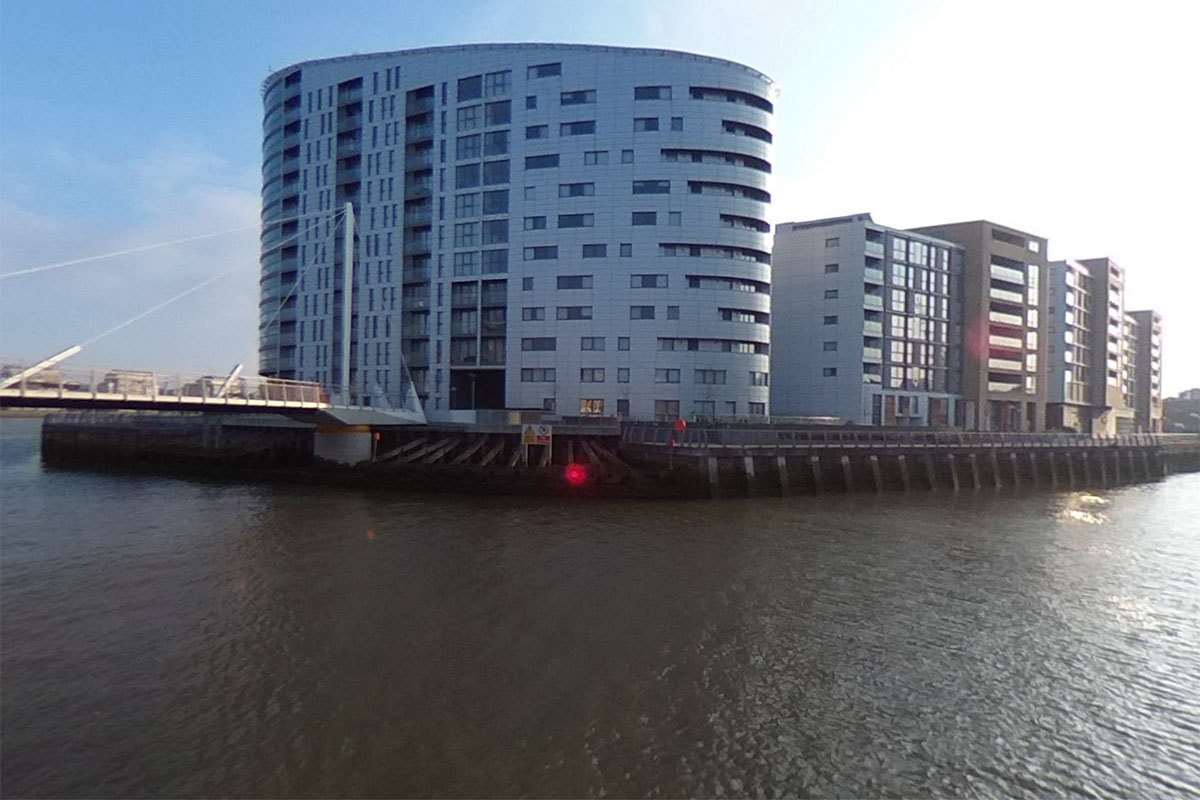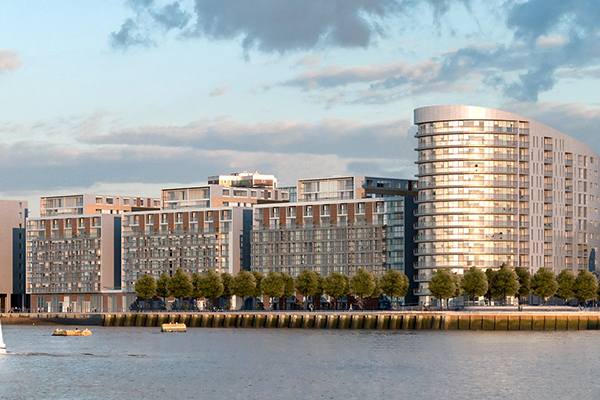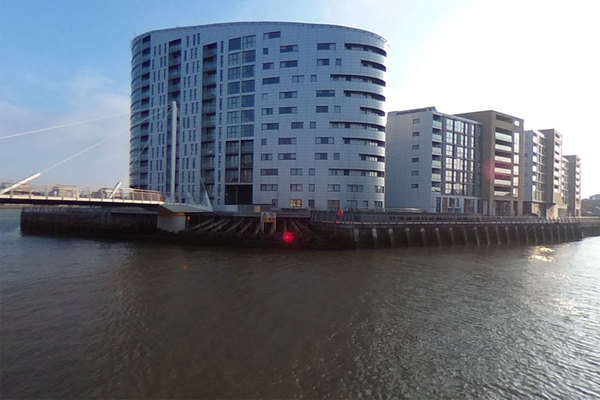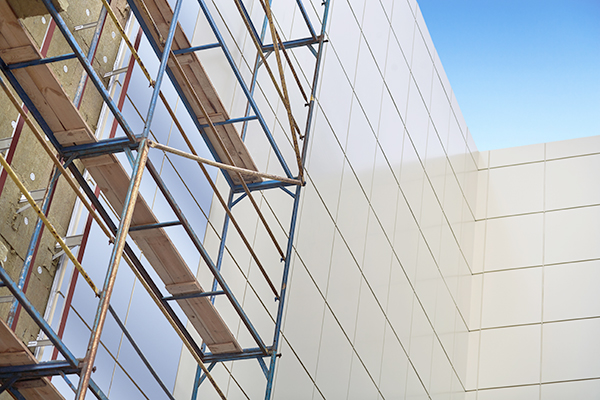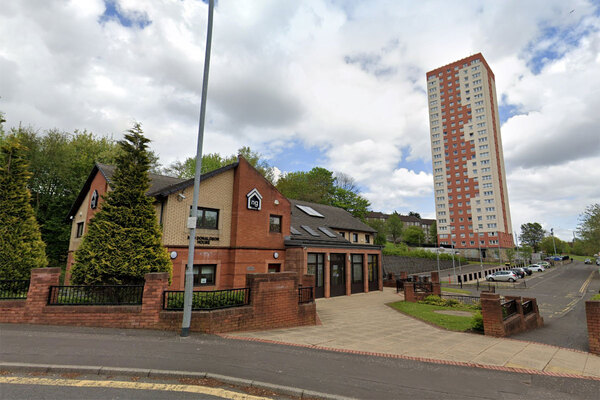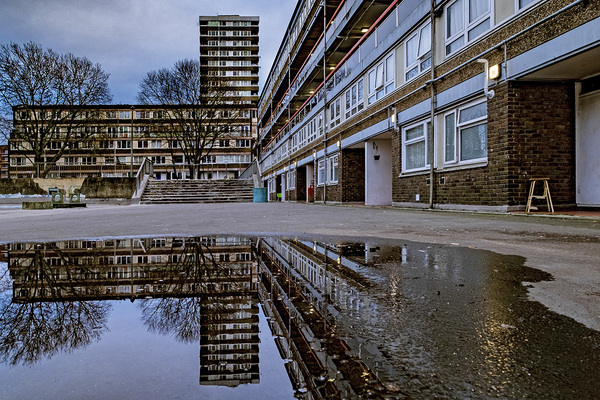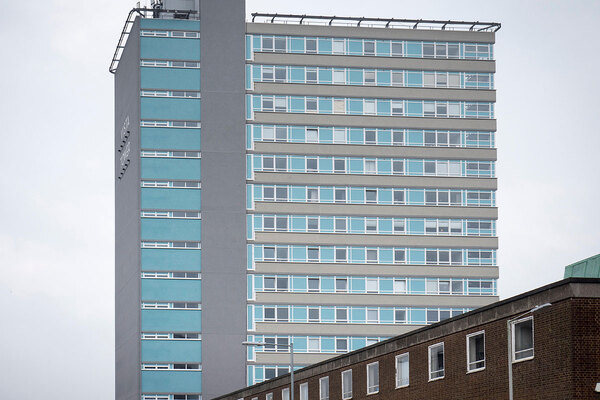You are viewing 1 of your 1 free articles
NHBC accepts claim for Grenfell-style cladding removal from private development
The National House Building Council (NHBC) has accepted a claim from the residents of a private estate to pay for the removal of its Grenfell-style cladding.
New Capital Quay, a south-east London development of 12 completed blocks, is clad with similar aluminium and polyethylene panels to Grenfell Tower and combustible phenolic foam insulation.
Residents have been engaged in a long battle with the developer Galliard Homes and the NHBC, which provided the warranty for the properties, over who should pay for its removal.
Today, the NHBC said it had accepted the claim of residents following an investigation.
In a statement, it added: “This has been a highly complex process and residents have understandably been concerned. We have made every effort to ensure they have been kept informed throughout the process and residents can now be assured that they will not have to bear the costs of the work.
“We are working closely with the managing agents PMML (Property Management Matters Ltd) and Galliard Homes and we will all keep residents updated with progress.”
The spokesperson added: "NHBC has begun the process of calculating the cost of the necessary remedial works, which will include the replacement of the ACM cladding."
New Capital Quay development in Greenwich was completed in 2013/14 and has become one of the focal points in a nationwide battle over who will pay for the removal of cladding on privately owned blocks.
Leaseholders up and down the country have been hit with bills running to tens of thousands of pounds to cover the removal, leading to lengthy legal battles.
Inside Housing revealed in January that the NHBC was facing a claim for liability to pay for the removal of the cladding. Today’s announcement may mark a significant step forward in the debate.
Chris Bright, a resident of the development, said: “NHBC has taken its responsibilities seriously and it is wonderful news for the residents of NCQ.
“We need Galliard to act honourably as well and get on with the remedial work… The cladding and insulation must come off urgently.”
Local Labour MP Matthew Pennycook added on Twitter: “Fantastic news for all residents of New Capital Quay in West Greenwich. Having concluded their investigation, the NHBC have today accepted the claim and will now cover the costs of removing and replacing all the dangerous cladding and insulation across the site.”
Inside Housing had previously reported that the fire service had advised residents it had “no power” to mandate the removal of dangerous cladding.
Valuations of flats in the tower had plummeted, leading to fears the taxpayer could be exposed to huge losses on Help to Buy-funded homes.
Never Again campaign
In the days following the Grenfell Tower fire on 14 June 2017, Inside Housing launched the Never Again campaign to call for immediate action to implement the learning from the Lakanal House fire, and a commitment to act – without delay – on learning from the Grenfell Tower tragedy as it becomes available.
One year on, we have extended the campaign asks in the light of information that has emerged since.
Here are our updated asks:
GOVERNMENT
- Act on the recommendations from Dame Judith Hackitt’s review of building regulations to tower blocks of 18m and higher. Commit to producing a timetable for implementation by autumn 2018, setting out how recommendations that don’t require legislative change can be taken forward without delay
- Follow through on commitments to fully ban combustible materials on high-rise buildings
- Unequivocally ban desktop studies
- Review recommendations and advice given to ministers after the Lakanal House fire and implement necessary changes
- Publish details of all tower blocks with dangerous cladding, insulation and/or external panels and commit to a timeline for remedial works. Provide necessary guidance to landlords to ensure that removal work can begin on all affected private and social residential blocks by the end of 2018. Complete quarterly follow-up checks to ensure that remedial work is completed to the required standard. Checks should not cease until all work is completed.
- Stand by the prime minister’s commitment to fully fund the removal of dangerous cladding
- Fund the retrofitting of sprinkler systems in all tower blocks across the UK (except where there are specific structural reasons not to do so)
- Explore options for requiring remedial works on affected private sector residential tower blocks
LOCAL GOVERNMENT
- Take immediate action to identify privately owned residential tower blocks so that cladding and external panels can be checked
LANDLORDS
- Publish details of the combinations of insulations and cladding materials for all high rise blocks
- Commit to ensuring that removal work begins on all blocks with dangerous materials by the end of 2018 upon receipt of guidance from government
- Publish current fire risk assessments for all high rise blocks (the Information Commissioner has required councils to publish and recommended that housing associations should do the same). Work with peers to share learning from assessments and improve and clarify the risk assessment model.
- Commit to renewing assessments annually and after major repair or cladding work is carried out. Ensure assessments consider the external features of blocks. Always use an appropriate, qualified expert to conduct assessments.
- Review and update evacuation policies and ‘stay put’ advice in the light of risk assessments, and communicate clearly to residents
- Adopt Dame Judith Hackitt’s recommended approach for listening to and addressing tenants’ concerns, with immediate effect
CURRENT SIGNATORIES:
- Chartered Institute of Housing
- G15
- National Federation of ALMOs
- National Housing Federation
- Placeshapers
The Paper Trail: The Failure of Building Regulations
Read our in-depth investigation into how building regulations have changed over time and how this may have contributed to the Grenfell Tower fire:
